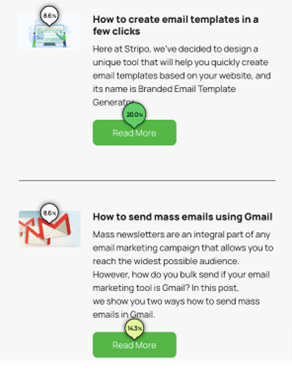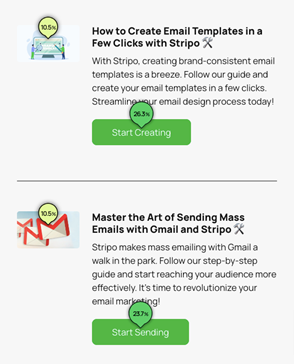GenAI: From junior to a senior copywriter
The buzz around Generative Artificial Intelligence (GenAI) shows no signs of waning. On the contrary, enthusiasm and interest around GenAI are rapidly growing as it continues to revolutionize various industries with innovative applications.
When GenAI first emerged, it was met with significant skepticism regarding its potential. However, the advent of ChatGPT and other advanced technologies has highlighted the extraordinary abilities and usefulness of GenAI. Despite these advancements, current evaluations indicate that GenAI does not replace human expertise. Instead, it acts as a powerful assistant, substantially reducing the time required for content optimization and generation. This realization has shifted the perspective on GenAI from being a competitor to human skills to a complementary tool. The synergy between humans and GenAI is proving to yield remarkable results.
Building on this understanding, GenAI is often likened to a junior copywriter in its current state. This analogy naturally leads to an intriguing question: Is it feasible for GenAI to evolve into performing at mid-level or even senior copywriting capacities?
Where and how to integrate GenAI into email marketing
Below are the two most popular applications of GenAI:
1. Copy generation and optimization: GenAI optimizes and revises your existing copy, ensuring that it matches your desired tone; enhances your email copy's clarity and simplicity; removes industry jargon that might be unclear to those outside your field; and points out gaps in your content. It crafts content from your outlines.
2. Imagery generation and optimization: GenAI can edit your photos and perform tasks such as removing unnecessary elements from the imagery, adding new backgrounds, improving the quality and brightness of your photos, and generating a new image according to your prompts.
How can you make GenAI assist you with these tasks?
First, you need to know its limitations. Currently, GenAI cannot bypass the following:
• lack of emotional understanding: AI lacks emotions, feelings, or empathy. It can discuss emotions, but it doesn't comprehend or experience them;
• limited creativity: Although you can ask GenAI to be creative, its creativity is based on patterns in existing data. Original and groundbreaking creative work is beyond its capabilities;
• fact-checking is necessary: AI is trained on information available on the internet, so its responses may not always be accurate. Verify information from reliable sources for critical use;
• bias in data: Due to its training data, AI can inadvertently generate biased or controversial content that potentially contains prejudiced information;
• language performance: AI excels in English due to extensive training data, but its accuracy may vary in less common languages. Still, it can assist in several languages;
• industry suitability: Generative AI is unsuitable for medical, financial, legal, psychological sciences, or national security purposes. It should not compromise academic integrity.
Second, half of your success depends on your prompts and briefs:
• provide detailed instructions: Avoid ambiguity by offering clear guidance, such as specifying audience details;
• ask how GenAI interprets prompts: Before it starts working on your tasks, inquire about its understanding to avoid misunderstandings;
• set custom instructions: It is commonly known that setting custom instructions regarding your company, your preferred tone of voice, and your opinions on industry innovations will help GenAI create texts that closely match your writing style and content depth. I must confess, I am not sure about this one, so now I am running some A/B tests to check it;
• create separate chats for new topics: Enhance interaction quality by organizing topics;
• assign roles: Improve relevance and empathy by framing tasks within role-based scenarios;
• define do's and don'ts: Give GenAI clear instructions as to what you want and what you don't want in the output;
• leave feedback: Providing honest feedback to a junior copywriter is an effective way to help them improve, ensuring that the content meets your company's needs and expectations;
• clearly define your do's and don'ts: For optimal results, it's essential not only to instruct the AI on what you want but also to specify what you don't want in the output, such as words that should not be used in your emails;
• utilize plugins for link analysis: To access information from open sources, we must use plugins, also known as link readers.
How a unified approach to AI-copy creation increases CTOR: Case study by Stripo
We pondered the potential of GenAI in optimizing not just individual email elements but entire sections. This was motivated by dual goals: saving time and mitigating the risk of disjointedness and inconsistent terminology when elements are generated or optimized separately. Our study focused on an email digest with blog post annotations, typically comprising CTA buttons, titles, and descriptions. Consequently, we tasked ChatGPT to optimize the entire copy for these annotations.
Our primary objective was to save time. Not only did this approach meet this goal, but it also led to a significant improvement in our click-to-open rate (CTOR), which increased by 41.34%.
|
Version |
Human-written email |
AI-generated email |
|
Recipients |
42,024 |
42,078 |
|
Open Rate (OR) |
31.46% |
31.52% |
|
Click-to-open Rate (CTOR) |
5.72% (raw data: 756) |
8.08% (raw data: 1,072) |
|
Creative click Maps |
|
|
Once your GenAI assistant excels in these basic tasks, you can proceed to more advanced ones.
Advanced applications of GenAI:
GenAI is capable of way more things than generating/optimizing copy:
1. Idea generation and brainstorming: When struggling with ideas for your following newsletter, turn to GenAI. You can ask ChatGPT for newsletter ideas (this is what we sometimes do), or you can ask it to identify topics that would engage audiences and are tailored to their age, country, etc.
2. Localization: More than mere translation, localization entails comprehending and adapting to the customs and traditions of your global audience. This is where GenAI can assist by aggregating all the information it can find online. Additionally, it can be used for translation. However, I suggest that you have these translations reviewed by a native speaker.
3. Email strategy and brief generation: You can ask a GenAI tool to develop a plan for the series of emails. In this case, GenAI can suggest several emails for a specific goal, provide a brief, and then create copy for each email. I will describe this in a little more detail below.
Email strategy and brief generation: A survey by Stripo
Chat GPT is excellent at generating briefs. Here's how we used it at Stripo.
We created an eBook containing tips and useful materials from email marketing industry experts. Within a short period of time, it was downloaded by several hundred people. Next, we wanted to get feedback from our readers. The process was as follows:
1. We created a request in ChatGPT: "I need to generate six emails I will send once a week to collect feedback from our recipients."
2. ChatGPT generated a brief — the main message idea — for each email.
3. We asked GenAI to generate all six emails based on this data and include the survey form wherever it was suitable.
We are currently conducting multiple tests in collaboration with our clients and professional translation agencies. The aim is to explore how GenAI can assist in localization, including adapting content to the traditions and customs of each target audience. Additionally, we are investigating the potential quality loss in translations when performed by GenAI.
Wrapping up
GenAI is not a replacement but a powerful enhancement to human capability. I think you can fully train GenAI for your goals using proper requests, turning a junior professional into a mid-level or even a senior professional.
 Photo by Aaron Burden on Unsplash
Photo by Aaron Burden on Unsplash

 How to resolve AdBlock issue?
How to resolve AdBlock issue? 


 Founder and CEO of
Founder and CEO of